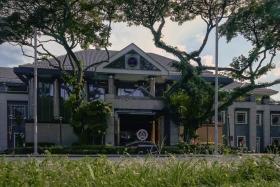Singapore sees slowest population growth since 1965
More are staying single, more are better educated, census shows
Singapore's population grew at its slowest pace since independence, with more Singaporeans staying single and even those who marry having fewer babies.
The nation's sixth census since independence in 1965 also found other key trends set in motion decades ago to have solidified further.
Singapore residents of all ages and races are now better educated and more do not consider themselves as having a religion.
Conducted once every 10 years, the census is the largest national survey undertaken here on key characteristics of the population such as demographic, social, economic and employment trends.
More findings from the Census of Population 2020 will be released tomorrow.
Over the past 10 years, Singapore's total population grew by around 1.1 per cent each year - the slowest rate since independence.
The number of citizens grew from 3.23 million to 3.52 million, while the number of permanent residents held steady at around half a million.
The population is ageing - those aged 65 and older formed 15.2 per cent of the resident population last year, a marked rise from 9 per cent in 2010.
In a trend that has implications for continued population growth, the proportion of singles rose across all age groups over the past 10 years, with the sharpest increase among younger Singaporeans aged 25 to 34.
Less-educated men were more likely to stay single, whereas the opposite was true of women.
Women, especially if they were more educated, had fewer children. The average number of children born for every resident woman aged 40 to 49 who had ever been married fell from 2.02 in 2010 to 1.76 last year.
Within this age group, women who were university graduates had an average of 1.66 children last year - marking a steady decline from 1.74 children 10 years ago and 1.95 in 2000.
Singaporeans are also better educated. Among residents aged 25 and over, almost six in 10 (58.3 per cent) attained post-secondary or higher qualifications, up from less than half (46.5 per cent) in 2010. The Chinese, Malay and Indian communities all saw improvements.
Women closed the educational gap with men in each successive cohort.
When it came to those aged 25 to 34, the proportion of women (90.2 per cent) with post-secondary or higher qualifications exceeded men (90 per cent).
English was the language most frequently spoken at home for 48.3 per cent of residents aged five and over last year, up from 32.3 per cent in 2010. Most of them also spoke a vernacular language at home.
There are growing numbers of Singaporeans who cite no religious affiliation.
The proportion was 20 per cent last year, up 3 percentage points from a decade ago. This number was 15 per cent in 2000. The increase took place across all age groups and most types of educational qualifications.
FOR MORE, READ THE STRAITS TIMES
Get The New Paper on your phone with the free TNP app. Download from the Apple App Store or Google Play Store now




